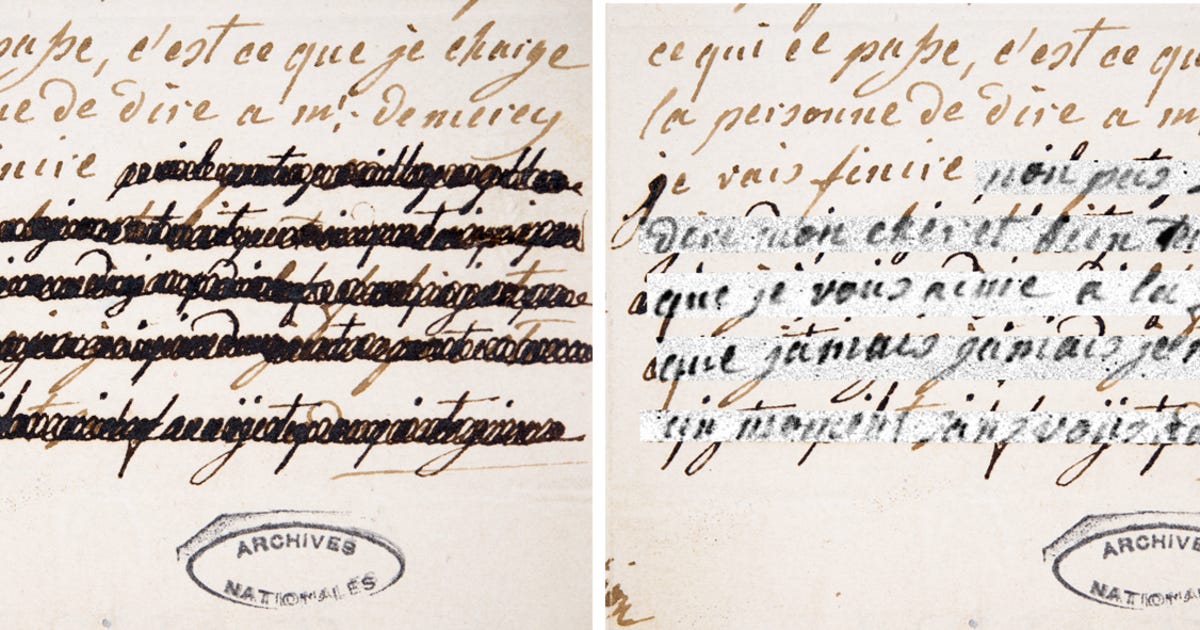How to write x ray x ray scatter radiation how is x ray spelled x ray letter markers lead letters for x ray markers discovered the x ray x ray scientist which scientist made x ray diffraction of dna scientist xcom 2

Scientists X-ray letters between Marie Antoinette and secret lover to reveal hidden passages
Centuries ago, a dashing foreigner named Axel von Fersen allegedly enchanted the notoriously extravagant queen of France, Marie Antoinette. They etched their forbidden love in ink by exchanging letters from afar, but historians have struggled to decipher words that seem purposely scribbled over.
What were these rumored lovers trying to hide?
"There are passages -- sometimes several lines -- that are redacted, or covered with loops that prevent reading," said Anne Michelin, a chemist at the Center for Research and Conservation at Sorbonne Universite in France. "It is impossible, at least for me, to read what is below the redaction."
Michelin and her team were contacted by the National Archives in France -- which holds 15 of the couple's preserved letters, shared around the time of the French Revolution, which began in 1789 -- to decrypt what lies beneath those redactions.
Employing a long and complex process involving X-ray fluorescence and ink analysis, the team turned to chemistry to piece together the pair's secrets. Their analysis broke through on eight of the notes, uncovering telling words such as "my dear friend," "beloved," "madly" and "adore." They published their findings Friday in the journal Science Advances.
"The redacted passages are the most intimate passages of the correspondence," Michelin said. "Where a vocabulary of the order of the love relationship appears."

Photo of a redacted passage of the letter of Jan. 4, 1792, and superimposition on this same photo of the images obtained after processing of the data acquired by the XRF scanner -- which allows the reading of the initial text.
Centre de Recherche sur la ConservationMichelin also surprisingly discovered that von Fersen, a Swedish count, did the censoring -- contradicting the commonly held belief that the count's great nephew tampered with the letters 100 years later and the intuitive idea that Marie Antoinette took care of the deed herself.
The troubled queen was the one with obvious assets to lose: her marriage to King Louis XVI, her royal title and most of all, her already dwindling reputation due to perceived political negligence that left France in massive debt.
"Axel von Fersen probably wanted to keep this correspondence, important to him perhaps for sentimental reasons or political strategies, while protecting the queen's honor -- and perhaps his own," Michelin explained.
Although the unveiled passages don't radically change what we know about the relationship between von Fersen and the queen, these lines provide a nuanced peek into the political turmoil of the era.
"There is no doubt about the love relationship," Michelin said. "The content of their correspondence -- even without redactions -- leaves no doubt about it."
But she emphasizes that the centuries-old letters remain a "precious witness of these troubled times -- of the way political events exacerbate emotions," as the full text of the messages between von Fersen and the queen pepper political language with adoring sentiments.
It seems von Fersen was declaring his love to Marie Antoinette while advising her on governmental strategies, the latter of which he didn't try to hide.
To delve into this rich history, scientists used a form of ink analysis to learn what lies beneath the protective cloaks over the couple's letters. The tests used in the study allowed them to examine the chemical makeup of various inks to identify contrasting features.
Then they differentiated between ink used to write the letters and ink used to hide passages.

Photo of the second page of the autograph letter from Marie Antoinette to von Fersen dated Jan. 4, 1792, and partially redacted.
Centre de Recherche sur la ConservationOne of the major findings is that all the letters from the archives were penned by von Fersen -- including those addressed from the desk of Marie Antoinette. Von Fersen would rewrite his lover's letters and only keep the duplicates, presumably for security or perhaps tradition.
"Many letters written by Marie-Antoinette were copied by von Fersen, either because the original was initially encrypted to prevent the correspondence from being read by anyone…or simply because it was a common practice at the time," Michelin said.
With that knowledge, Michelin's team "compared the composition of the inks used by von Fersen to write and copy the letters [with] the redaction inks."
But it's not as simple as deciphering between two inks' chemicals. Von Fersen often used pigment with the same chemical composition, so the team had to rely on variations in chemical content of the elements zinc and iron. Using X-ray fluorescence, they contrasted zinc-to-iron ratios and mapped out pen strokes below redacted passages.
"The most challenging part was having to adapt to each letter -- sometimes to each word -- and to find the right strategy each time," Michelin said.
Differences in chemical compositions present on the paper are also what proved von Fersen redacted the passages himself. "The composition of the redaction ink was found in a writing ink on another letter," Michelin said.
"The coincidence was too big."
Whether you know about Marie Antoinette from her iconic fashion statements and graceful demeanor or her conviction for treason and resulting execution, she was a force. Her behavior, personal artifacts and romantic connections will continue to be studied for years to come, as historians unlock more chapters of her story.
Source


